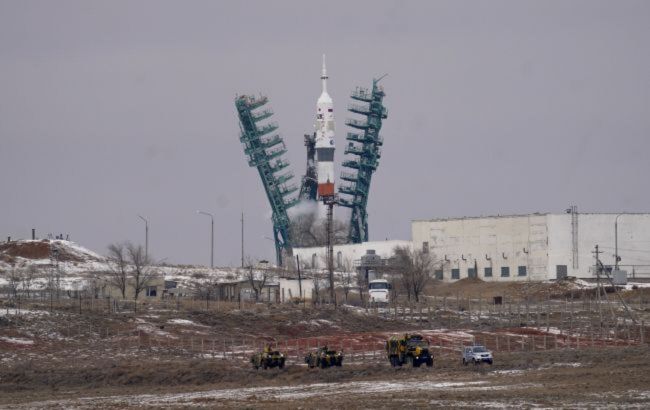Baikonur accident leaves Russia unable to launch astronauts into space
 Photo: Baikonur spaceport (Getty Images)
Photo: Baikonur spaceport (Getty Images)
An accident at the Baikonur spaceport has halted all crewed missions, marking the biggest failure in the Russian space program since the beginning of orbital exploration, according to Russian media.
Structure collapses during launch
During the launch of the Soyuz MS-28 spacecraft to the ISS on 27 November, a service cabin collapsed.
Footage from the Roscosmos broadcast shows that a movable structure under the launch platform, used during preparation of the rocket’s tail section, gave way and fell apart.
Rocket-launch analyst Georgy Trishkin noted that the incident occurred at Site 31, the only site from which crewed missions are possible.
In his assessment, launches of Soyuz and Progress vehicles are now "postponed indefinitely."
Launch pad damage
During the inspection, specialists noted that the exhaust plume from the first-stage engine had damaged part of the structure.
There were no injuries among the crew, but elements of the complex require restoration.
After reviewing available materials, spaceflight pioneer Vitaly Yegorov stated that "as of today, Russia has effectively lost the ability to launch humans into space, something that has not happened since 1961."
Position of Roscosmos
Roscosmos confirmed damage to "several elements of the launch pad" and said they would be replaced.
The state corporation claims that spare parts have been prepared for the repairs and that assessment of the site is ongoing.
Russia has intensified the development of systems aimed at EU satellites, and against this backdrop, the EU is calling for an acceleration of its own space-capability development. EU defence and space commissioner Andrius Kubilius said that orbital protection is becoming a priority as the EU already faces attacks, adding that space now occupies an important place in the new defence agenda.
Russian forces continue relocating ships between different piers in temporarily occupied Sevastopol in an attempt to reduce the risk of precision strikes and complicate detection.

